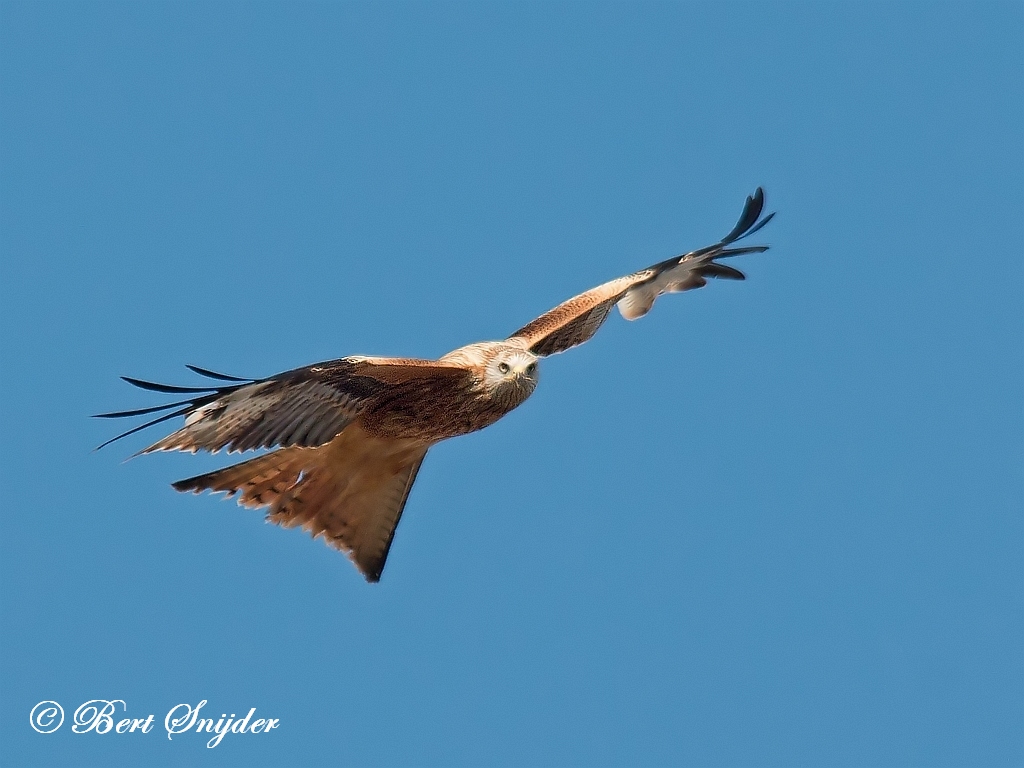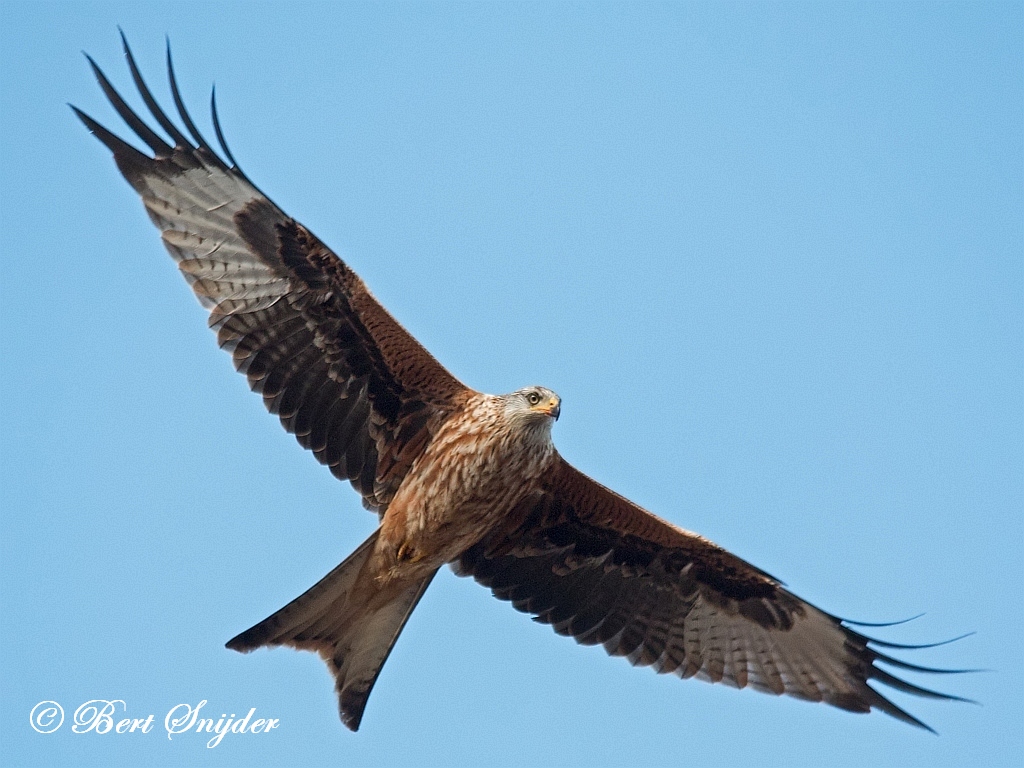Red Kite, Rode Wouw, Rotmilan, Milhafre-real, Milano real
Spotted on our property Monte Horizonte in the Alentejo Region of Portugal. Red Kite sound
The Red Kite (Milvus milvus) is a medium-large bird of prey in the family Accipitridae, which also includes many other diurnal raptors such as eagles, buzzards and harriers. The species is currently endemic to the Western Palearctic region in Europe and northwest Africa, though formerly also occurred just outside in northern Iran. It is a rare species which is resident in the milder parts of its range in western Europe and northwest Africa, but birds from northeastern and central Europe winter further south and west, reaching south to Turkey. Vagrants have reached north to Finland and south to Israel and Libya.

More photos at the bottom of this page.
Adults differ from juveniles in a number of characteristics:
Adults are overall more deeply rufous, compared with the more washed out colour of juveniles;
Adults have black breast-streaks whereas on juveniles these are pale;
Juveniles have a less deeply-forked tail, with a dark subterminal band;
Juveniles have pale tips to all of the greater-coverts (secondary and primary) on both the upper- and under-wings, forming a long narrow pale line; adults have pale fringes to upperwing secondary-coverts only.
These differences hold throughout most of the first year of a bird’s life.
The Red Kite’s diet consists mainly of small mammals such as mice, voles, shrews, young hares and rabbits. It also feeds on a wide variety of carrion including sheep carcasses and dead game birds. Live birds are also taken and occasionally reptiles and amphibians. Earthworms also form an important part of the diet, especially in the spring.
As scavengers, red kites are particularly sensitive to poisoning. Illegal poison baits set for foxes or crows are indiscriminate and kill protected birds and other animals.
At signs of danger a mother will signal the young who will “play dead” to the extent that a fox will believe them to be dead and leave them, thinking it can return to eat them later.
Adult red kites are sedentary birds, and they occupy their breeding home range all year. Each nesting territory can contain up to five alternative nest sites. Both birds build the nest on a main fork or a limb high in a tree, 12-20m high made of dead twigs and lined with grass or other vegetation and sheep’s wool.







Other synonyms:
Asturian: Milán del Rau Forcau, Milán Rauforcau
Breton: Ar barged ruz
Catalan: Milà reial
Catalan (Balears): Milà reial
Welsh: Barcud coch, Barcut, Barcutan, Boda gwennol
Danish: Rød Glente
German: Rotmilan, Rotmilanmilvus
English: European Red Kite, Red kite
Spanish: Milano Real
Estonian: Puna-harksaba
Basque: Milà reial
Finnish: Isohaarahaukka
Faroese: Glenta
French: Milan noir, Milan royal
Irish: Cúr Rua
Gaelic: Clamhan Gabhlach, Clamhan Gobhlach, Croman Lachaidh
Galician: Milà reial, Millafre real
Hungarian: Vörös kánya
Icelandic: Svölugleða
Italian: Nibbio reale
Japanese: akatobi
Cornish: Scowl
Latin: Milvus milvus, Milvus milvus milvus
Lithuanian: Rudasis peslys
Dutch: Rode wouw
Norwegian: Glente
Polish: Kania rdzawa, kania ruda, kania ruda (kania rdzawa)
Portuguese: milhafre real, Milhafre-real, Milhano
Romansh: Milan cotschen
Slovenian: rjavi škarjek, rjavi škarnik
Albanian: Huta bishtgërshërë e kuqërreme
Swedish: Glada, Röd glada
Travel Birdwatching Holiday Alentejo, Vacation Portugal for birders guided birdwatching Tours and Trips.